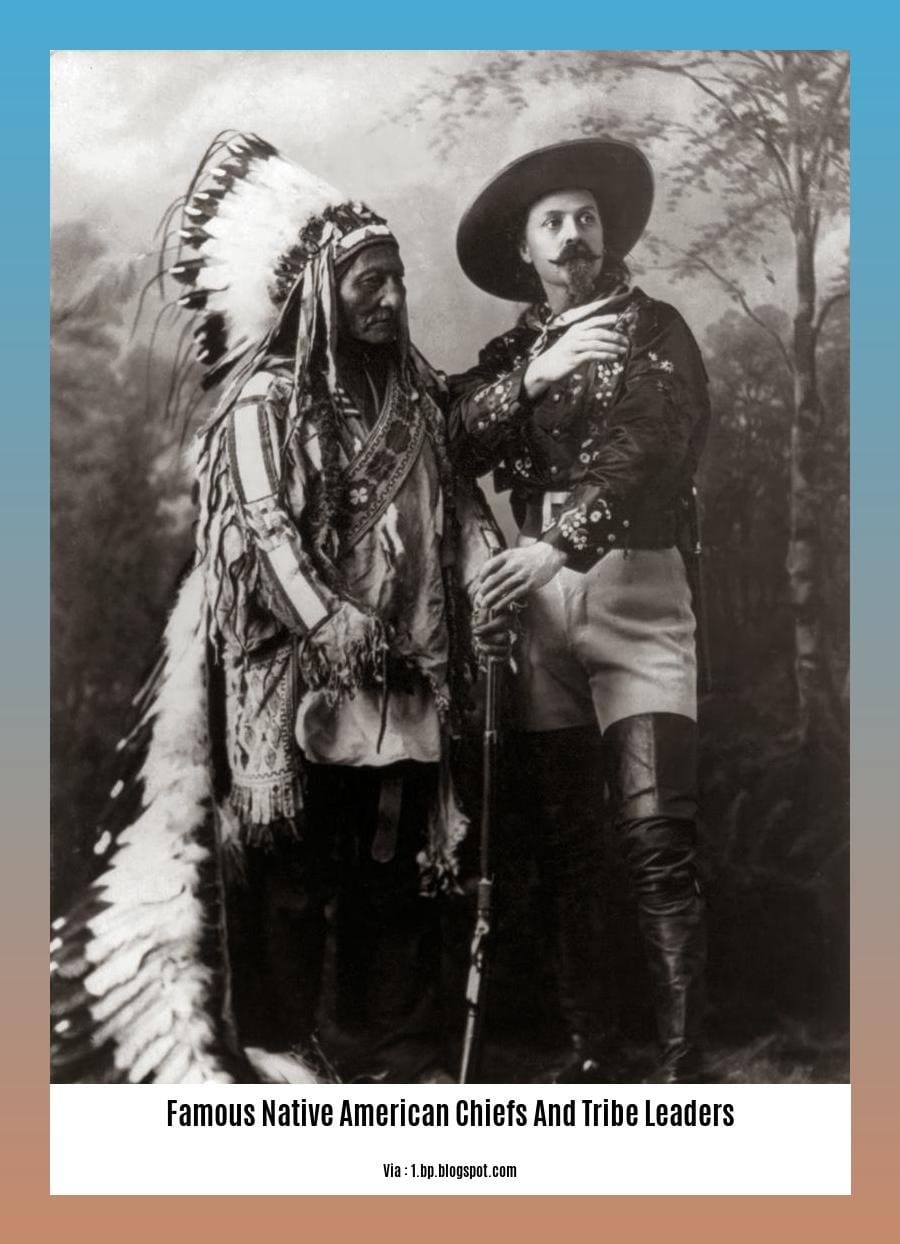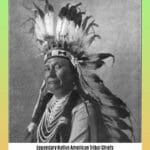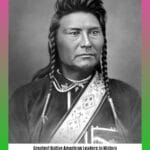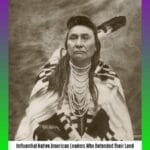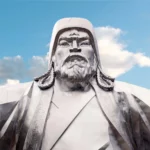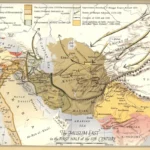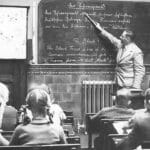Welcome to a captivating exploration of [Famous Native American Chiefs and Tribe Leaders: Guardians of Tradition and Resilience]. Step into a world where legendary figures and fierce warriors emerge from the pages of history. Discover the indomitable spirits that led tribes through triumph and adversity, shaping the destiny of a continent. Prepare to be awe-inspired by their wisdom, courage, and unwavering commitment to preserving their heritage.
Key Takeaways:
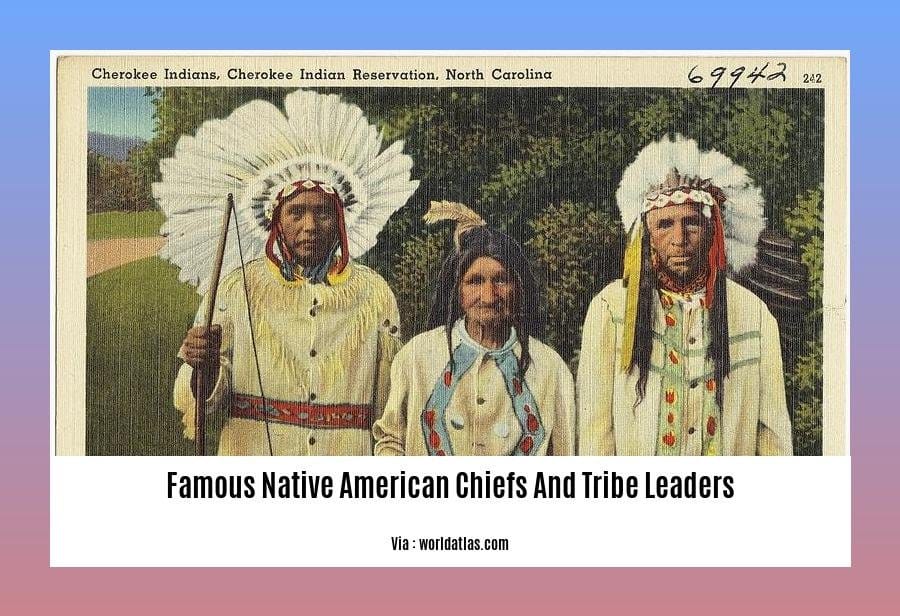
- Sitting Bull, Crazy Horse, Red Cloud, Geronimo, Cochise, Chief Joseph, Benito Juarez, and Tecumseh were among the most influential Native American leaders.
- They fought to preserve their traditions, defend their territories, and resist US government policies.
- Their legacy symbolizes resilience, cultural preservation, and the enduring spirit of Native American nations.
Famous Native American Chiefs and Tribe Leaders: Guardians and Leaders
When we examine famous Native American chiefs and tribe leaders, we bear witness to individuals who have played pivotal roles in shaping the history and heritage of the indigenous peoples of North America.
These leaders, hailing from diverse cultures and backgrounds, have guided their people through times of both adversity and triumph. Their wisdom, bravery, and unwavering commitment to their communities have left an indelible mark on the consciousness of the continent.
Leaders of Renown
- Sitting Bull: A revered Lakota leader, Sitting Bull led his people in the Battle of Little Bighorn, a pivotal moment in the history of Native American resistance.
- Crazy Horse: An Oglala warrior known for his fierce fighting skills, Crazy Horse played a crucial role in the Battle of Little Bighorn.
- Red Cloud: Red Cloud, a Lakota leader, successfully resisted the U.S. government’s attempts to seize the Black Hills, a sacred territory to his people.
- Geronimo: An Apache leader, Geronimo led raids against U.S. forces in protest of the forced removal of his people from their homeland.
- Cochise: Another Apache leader, Cochise fought for the independence of his people and negotiated a peace treaty with the U.S. government.
- Chief Joseph: A Nez Perce leader, Chief Joseph led his people on a remarkable journey of over 1,100 miles to escape forced relocation.
- Benito Juarez: A Zapotec leader, Juarez became the first indigenous president of Mexico and fought for the rights of his people.
- Tecumseh: A Shawnee leader, Tecumseh advocated for a confederacy of Native American tribes to resist European encroachment.
These famous Native American chiefs and tribe leaders embody the spirit of resilience, leadership, and the fight for cultural preservation. Their stories continue to inspire and remind us of the enduring strength and contributions of indigenous peoples throughout history.
Delve into the extraordinary lives of legendary native american tribal chiefs who shaped the destiny of their people, showcasing their unwavering spirit and rich cultural heritage. Discover the influential native american leaders who stood as valiant guardians of their ancestral lands, fighting for their sovereignty and traditions. Explore the greatest native american leaders in history whose wisdom, courage, and resilience continue to inspire generations.
Famous Indian Chiefs Photos: A Glimpse into the Past
Key Takeaways:
- Famous Indian Chiefs Photos capture the spirit of iconic leaders who shaped Native American history.
- Geronimo, Chief Joseph, and Sitting Bull epitomize resilience and courage in the face of adversity.
- Cochise’s role as an Apache leader highlights the importance of maintaining peace when possible, fighting for justice when necessary.
- These images serve as a testament to the rich heritage and cultural traditions of Native American tribes.
The faces of Native American chiefs, captured in Famous Indian Chiefs Photos, tell stories of leadership, resilience, and cultural heritage. These iconic figures, such as Geronimo of the Apache and Chief Joseph of the Nez Percé, embody the spirit of their people and the challenges they faced in a changing world.
Geronimo, with his piercing gaze and unwavering determination, led his people in a valiant struggle against the U.S. government’s encroachment on their lands. Chief Joseph’s dignified demeanor and eloquent speeches reflect his efforts to preserve his people’s traditional way of life, despite the relentless pressures of westward expansion.
Sitting Bull, a Lakota leader known for his spiritual wisdom and military prowess, played a pivotal role in the Battle of Little Bighorn. His stern countenance and traditional attire capture the essence of a revered warrior and visionary.
Cochise, a prominent Apache leader, sought peace with the Americans but fought fiercely when necessary. His Famous Indian Chiefs Photos showcase his strategic intelligence and his determination to protect his people’s interests.
These Famous Indian Chiefs Photos are not just historical images; they are windows into the lives and struggles of Native American leaders who shaped the course of history. They remind us of the resilience, courage, and wisdom that have been passed down through generations.
Citation:
Famous Native American Chiefs
In the annals of American history, Famous Native American Chiefs stand as towering figures, their names forever etched in the fabric of the nation. As guardians of their people’s traditions and leaders in the face of adversity, they embody resilience, wisdom, and an unwavering commitment to their communities.
From Sitting Bull’s courageous resistance against forced removal to Chief Joseph’s poignant plea for the preservation of his people’s ancestral lands, these chiefs left an indelible mark on the course of history. Their stories are not merely tales of the past but serve as reminders of the strength, resilience, and unwavering spirit of Native American peoples.
Key Takeaways:
- Famous Native American Chiefs were leaders of their tribes, responsible for crucial decisions and the well-being of their people.
- They were selected based on bravery, wisdom, and leadership skills and held positions of power and respect within their communities.
- Famous Native American Chiefs played a vital role in negotiating treaties, protecting their territories, and preserving their cultures.
- They faced significant challenges in the face of European colonization and displacement.
Relevant URL Source:
Famous Native American Chiefs: 12 Trailblazing Leaders
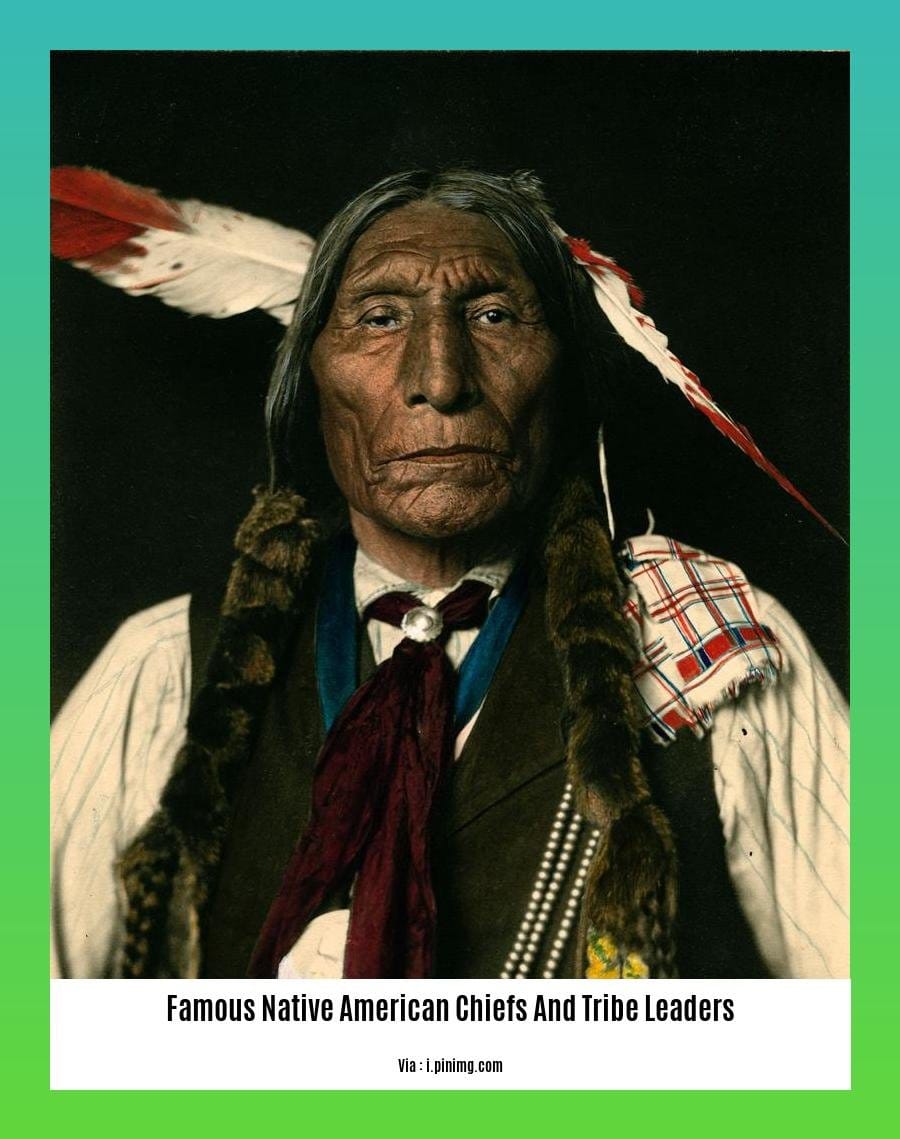
FAQ
Q1: Who were some of the most famous Native American chiefs and tribe leaders?
A1: Some of the most famous Native American chiefs and tribe leaders include Sitting Bull, Crazy Horse, Red Cloud, Geronimo, Cochise, Chief Joseph, Benito Juarez, and Tecumseh.
Q2: What were some of the key roles and responsibilities of Native American chiefs?
A2: Native American chiefs were responsible for leading their tribes or confederacies, making important decisions, negotiating treaties, protecting their territories, and preserving their cultures. They were selected based on their bravery, wisdom, and leadership skills, and held positions of power and respect within their communities.
Q3: What challenges did Native American chiefs face?
A3: Native American chiefs faced significant challenges, including European colonization, displacement, and forced removal from their lands. They fought to protect their people and preserve their cultures in the face of adversity.
Q4: What is the legacy of Native American chiefs and tribe leaders?
A4: The legacy of Native American chiefs and tribe leaders is one of resilience, leadership, and cultural preservation. They continue to inspire and guide Native American communities today, and their stories and contributions are an important part of American history.
Q5: Where can I learn more about Native American chiefs and tribe leaders?
A5: There are many resources available to learn more about Native American chiefs and tribe leaders, including books, articles, websites, and museums. Some reputable sources include the National Museum of the American Indian, the Smithsonian National Museum of Natural History, and the Library of Congress.
- Beyond the Beat: Unveiling Interesting Dance Facts from Around the World - July 26, 2024
- Unlocking Fleet Efficiency: Captivating Facts About FleetFinder - July 26, 2024
- Peel Back the Facts: The Unexpected Wonders of Banana Cleaner - July 26, 2024
